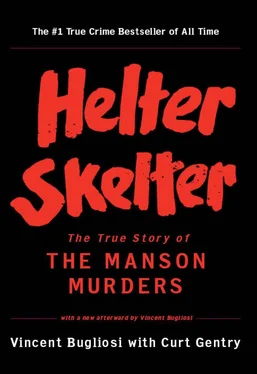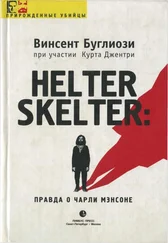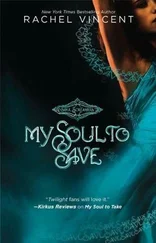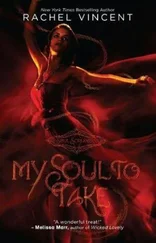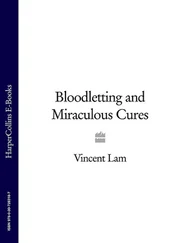Moreover, there was no evidence that Manson forced Watson and the girls to murder for him. “In fact, the inference is that they wanted to go along. That seemed to be the general feeling in the Family. Witness the statement of Cathy Gillies. Witness Susan Atkins’ telling Juan Flynn, ‘We’re going to get some fucking pigs.’ Does that sound like someone who is being forced to go out?”
Manson ordered the murders, but Watson and the three girls personally committed them “because they wanted to. Make no mistake about that. If they did not want to murder these victims, all they had to do was not do it. ”
I examined now the backgrounds of the three girls. Like the other female members of the Family, they had “one common denominator among them. It was obvious that each of them had a revulsion, an antipathy, a seething feeling of disgust for society, for their own parents.” Each of the three girls had dropped out of society before even meeting Charles Manson; each had taken LSD and other drugs before meeting Manson; and each had rejected her real family before meeting Manson.
Looking right at juror Jean Roseland, who had two teenage daughters, I said, “Don’t confuse them with the girl-next-door type. These three female defendants had repudiated and renounced their very families and society before they ever met Charles Manson.
“In fact, it was precisely because they had contemptuously disavowed and rejected their families and society that they ended up with Charles Manson. That is the very reason.
“Manson was simply the catalyst, the moving force that translated their pre-existing disgust and hatred for society and human beings into violence.”
I anticipated an argument that I felt Maxwell Keith might give. “The thought certainly may enter your mind that as wicked and as vicious as these three female defendants are, by comparison to Charles Manson they are nowhere as wicked and vicious as he is; therefore, let’s give Manson the death penalty and these three female defendants life imprisonment.
“The only problem with that type of approach is that these female defendants are given credit, as it were, because of Manson’s extreme wickedness and viciousness. Under that type of reasoning, if Adolf Hitler were Charles Manson’s co-defendant, Manson should receive life imprisonment because of the indescribably evil Adolf Hitler.” Rather than compare the three female defendants with Manson, I told the jury, they should evaluate the conduct of each of the defendants and determine whether it warranted the imposition of the death penalty. I then went into the acts of each, starting with Manson, enumerating one by one the reasons they deserved death rather than life.
One question the jury would surely ask, I noted, was: Why no remorse? The answer was simple: “Manson and his co-defendants like to kill human beings. That is why they have no remorse. As Paul Watkins testified, ‘Death is Charlie’s trip.’”
I came to the end of my argument.
“Now the defense attorneys want you to give these defendants a break. Did these defendants give the seven victims in this case a break?
“Now the defense attorneys want you to give their clients another chance. Did these defendants give the seven victims in this case any chance at all?
“Now the defense attorneys want you to have mercy on their clients. Did these defendants have any mercy at all on the seven victims in this case when they begged and pleaded for their lives?”
I then reminded the jurors that nine months earlier, during voir dire, each had told me he would be willing to vote death if he felt this was a proper case. I reiterated: “ If the death penalty is to mean anything in the State of California, other than two empty words, this is a proper case. ”
I concluded: “On behalf of the People of the State of California, I can’t thank you enough for the enormous public service you have rendered as jurors in this very long, historic trial.”
That night after dinner I said to Gail, “There must be something I have to do tonight.” But there wasn’t. For a year and a half, seven days a week, I had been totally immersed in the case. Now all I could do was listen to the closing arguments of the defense attorneys and wait until the jury reached its verdict.
Kanarek began by implying that perhaps I had poisoned the glass of water on the lectern and ended, more than a day later, by reading chapter after chapter from the New Testament.
“Now, this being the Easter season, there is an analogy here between Mr. Manson—this may sound at first blush to be ridiculous, and we are not suggesting that Mr. Manson is the deity or Christlike or anything like that— but how can we know? ”
Judge Older, who had several times warned Kanarek that he had exhausted all relevant rebuttal, finally brought his sermon to an end at the point of resurrection.
Shinn spent his time attacking the DA’s Office and in particular me: “Miss Atkins was drowning without friends…and she saw Mr. Bugliosi with an oar. She said: Oh, here comes help now. Miss Atkins reached out for that oar. And what do you think Mr. Bugliosi did? He hit her over the head with the oar.”
Keith delivered a strong argument against the death penalty itself. Before this, however, he said: “Now strangely, or perhaps not so strangely, I accepted wholeheartedly certain areas of Mr. Bugliosi’s argument.
“I accept his exposition to you that Mr. Manson dominated these girls and ordered the homicides.
“I accept that the ‘free Bobby Beausoleil’ motive is nonsense.
“I accept his telling you that you shouldn’t hold the Hinman murder against Leslie.
“I accept his argument that Leslie’s testimony and the testimony of the other girls in this case shows Mr. Manson’s domination and influence still persists and is all-pervasive.”
To deny these things, Keith said, would be to deny the evidence. Thus Keith became the first, and only, defense attorney to accuse Manson of these murders.
Keith, however, said that he did not agree that any of the defendants should receive the death penalty, not even Charles Manson. For in his opinion, Keith said, “Mr. Manson is insane,” and in instilling his thoughts into the minds of the three female defendants he had also infected them with his madness.
Keith concluded: “Give Leslie the chance for redemption, to which she is entitled. Remember, Linda Kasabian cut the umbilical cord, in Mr. Bugliosi’s words, that tied her to Manson and his Family. Give Leslie the chance to do the same. Give her life. I thank you.”
Fitzgerald read a short argument, at the end of which he began describing in detail how the three female defendants would be executed in the gas chamber at San Quentin Prison if the jury returned verdicts of death. This was improper argument, and I objected. When we approached the bench, Paul literally begged Judge Older to let him proceed. “This is extremely important! I can’t impress on the Court how important it is!” Because he was so desperate, I decided to back off, agreeing not to object if he would describe this as a hypothetical situation—“Imagine that this is happening”—and not as fact. He did so, after which Judge Older instructed the jury. They left the courtroom at 5:25 P.M. on Friday, March 26, 1971.
While I felt confident that the jury would return a death penalty verdict against Charles Manson, I was less sure when it came to the girls. Only four females had been executed in California history, none of them as young as the defendants.
I had anticipated that the jury would be out at least four days. When I received the call Monday afternoon, after only two days, I knew there could be only one verdict. It was too fast for anything else. Their actual deliberations, I later learned, had taken only ten hours.
Читать дальше
